Sword Scabbard: Types, Anatomy, and History
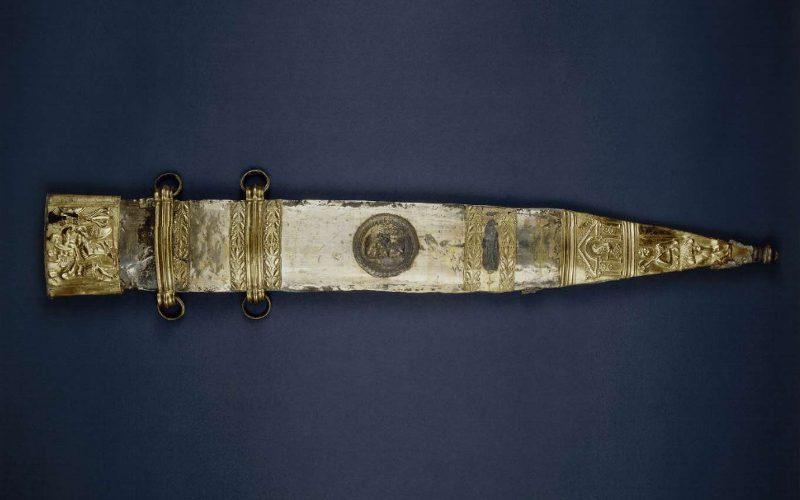
Swords were carried in scabbards that protected them from rain and damp while protecting everything else from their sharp edges. Scabbard construction and decoration styles varied, and each feature often reflects the fashion of the time.
Let’s explore the history of
Types of Sword Scabbards
The construction and materials of
Leather Scabbard
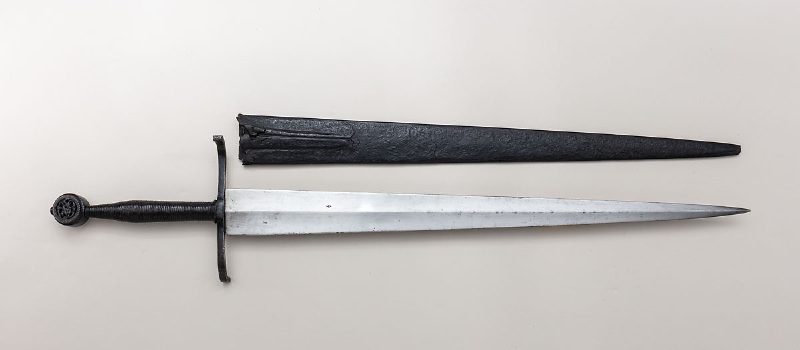
In the early 13th century, leather was widely used in scabbards. Early craftsmen preferred calf leather, but the outer part of the sheath utilized materials such as cattle hide, sheepskin, or goatskin. To resist wear and tear, the leather would have been coated with grease or oils.
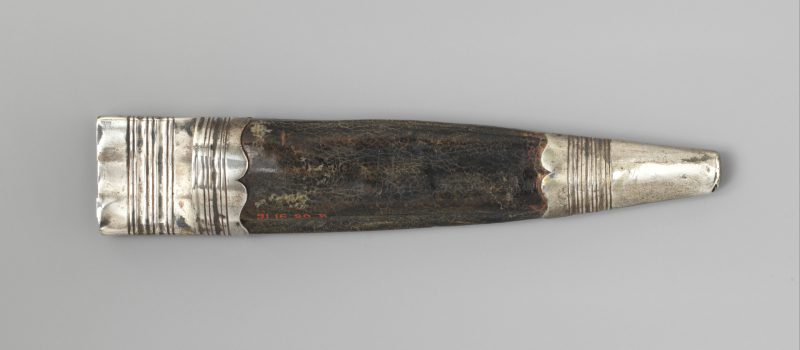
Black leather sheaths were not uncommon in medieval times. Late 18th century leather sheaths often had silver or metal fittings that secured the blade, but they were more typical on knives and daggers as swords of the time often had wooden scabbard.
Wooden Scabbard
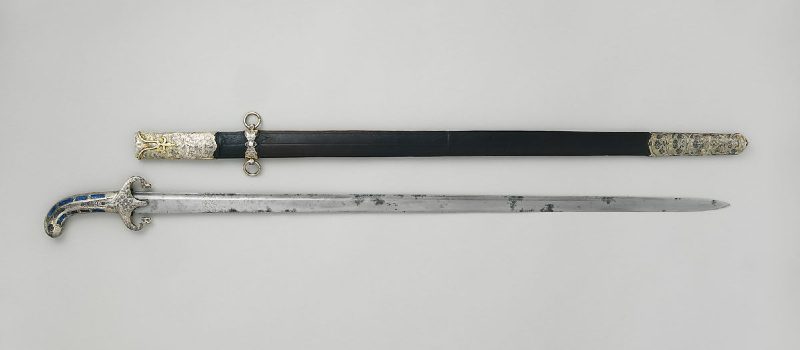
Wooden scabbards were made from paired strips of wood hollowed on the inside to match the shape of the blade and then glued together. Materials vary from region to region, but beech wood was common. The Roman gladius, Celtic daggers, and Viking swords often had wooden scabbards. Early medieval scabbards were blocky, but by the 14th century they became slimmer and closely fitted to the blade.
Most wooden scabbards had cloth or fur lining that protected the blade from corrosion and provided a secure fit. They often had an outer leather covering, usually painted or dyed, and sometimes wrapped in velvet. They also featured decorative and reinforcing metal fittings like the chape at the end of the scabbard. Indian swords like talwar often had a wooden scabbard covered with velvet.
Metal Scabbard

Metal scabbards varied from plain to highly ornate designs. Generally, the steel scabbard is tougher than earlier brass and leather examples. Military broadswords, sabers, cutlasses, and rapiers often had steel scabbards. Islamic swords were frequently inscribed with prayers and texts from the Koran, and their hilt and scabbards often had precious stone decorations.
The smallswords were a significant part of a gentleman’s wardrobe, so they were often richly decorated. Apart from hilts, their scabbard often featured luxurious materials such as silver, gold, and enamel.
Parts of a Sword Scabbard
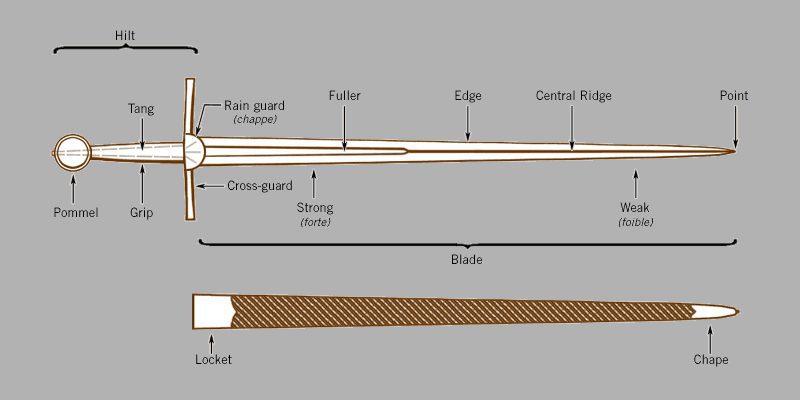
The scabbard construction may vary in different types of swords. Generally, it has a metal chape protecting its tip and a locket at the throat, where the
Chape
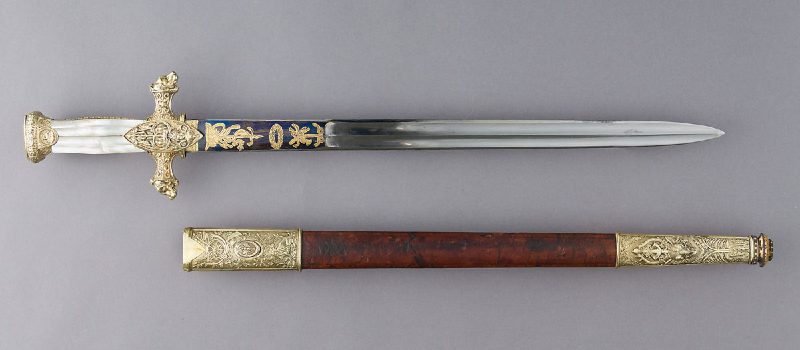
The chape is the metal that encloses the ends of the scabbard to keep the point of the
Locket
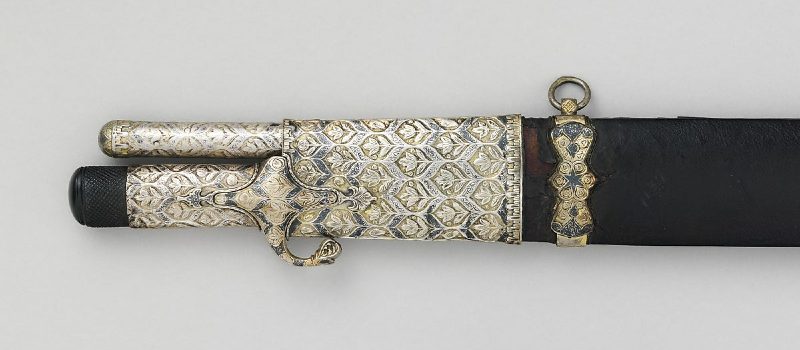
The locket consists of the throat, the upper metal fitting where the blade enters. Both the locket and chape were usual features in medieval scabbards, though some hunting swords had scabbards with sockets for small hunting knives and a bodkin, a pointed multipurpose tool. Some also included a set of throwing darts and sabers.
Suspension Rings and Band
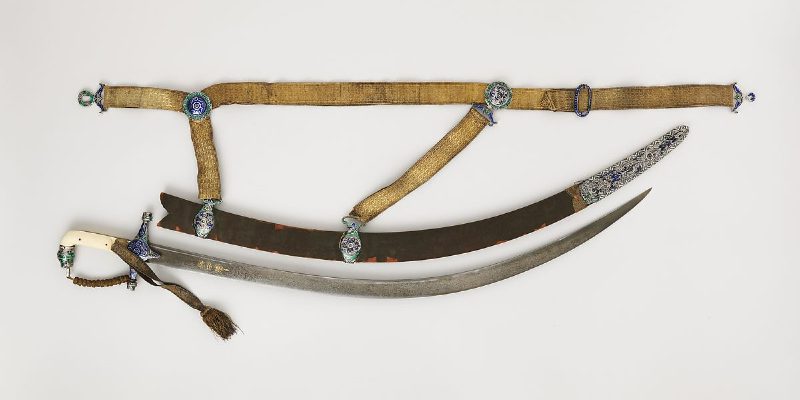
Many scabbards like the Persian shamshir featured suspension rings, which allowed them to be attached to a
Sprung Steel Covering
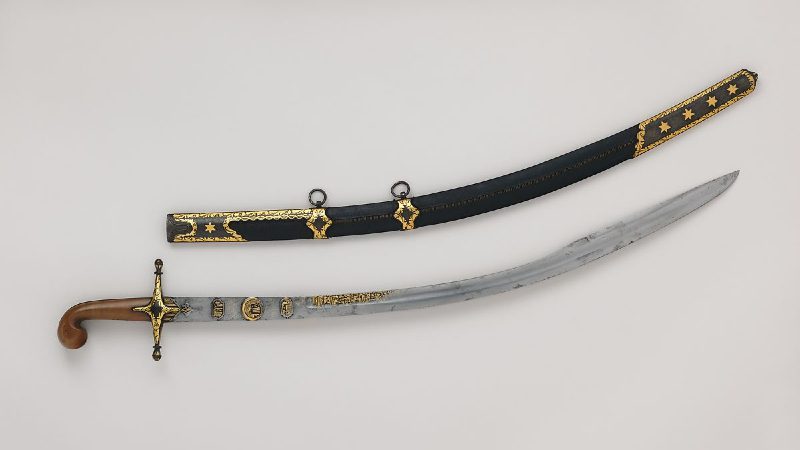
Some sabers, like the Turkish kilij, feature a sprung steel covering on their scabbards.
Like the Persian shamshir, it has a highly curved blade but is generally broader and widened near the tip. Their scabbards are specially adapted, with a slot at the back covered with sprung steel to make the drawing of the
Facts About Sword Scabbards
The terms “sheath” and “scabbard” are often used interchangeably, but the former implies a covering for knives and daggers while the latter for swords.
Here are the things you need to know about
Craftsmen used different types of leather decorations on sword sheaths.
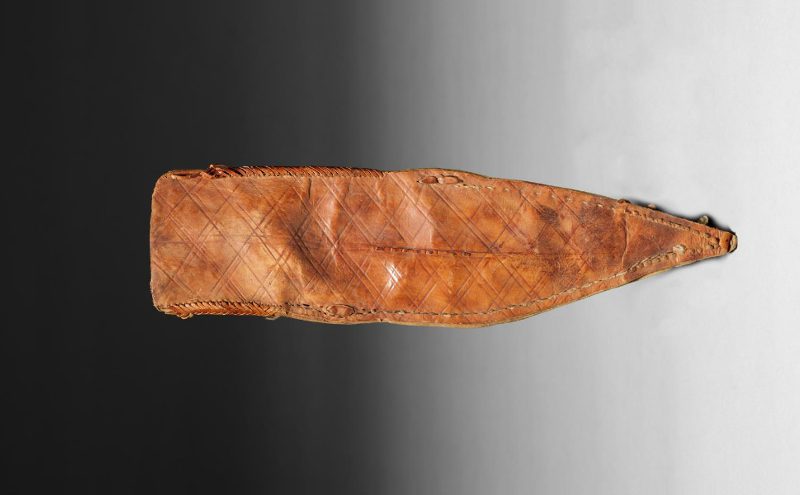
The art of embossing or creating raised decoration on leather originated in Spain. Some leather sheaths had zoomorphic designs, including leaf and flower motifs. Stamping of heraldic symbols and other designs was also not uncommon. By the late 14th and 15th centuries, the incision was the most popular type of leather decoration.
A
Medieval swords must have their scabbards replaced often as the knights continually wore them out, making them more subjected to wear and tear. Each time a craftsman creates a new
Medieval daggers were also kept in metal or leather sheaths and worn in various ways.
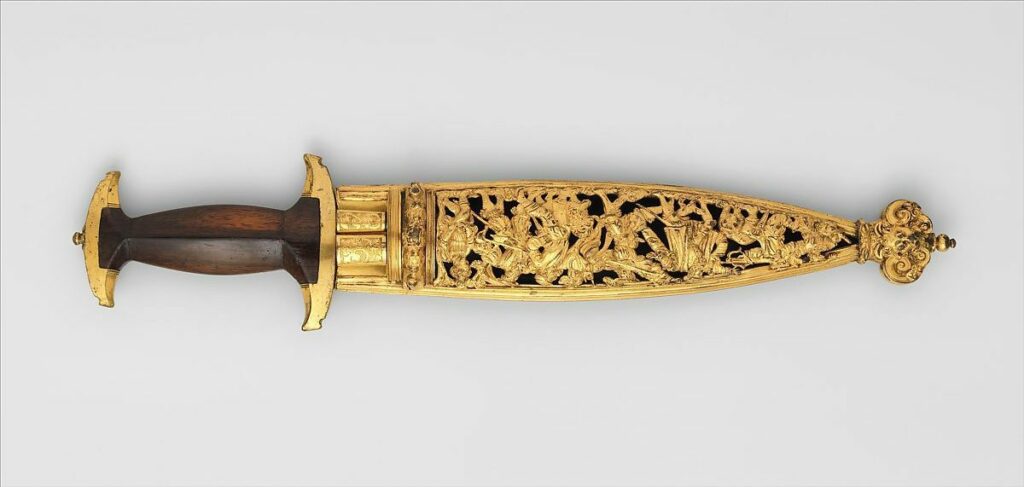
Daggers have various forms and shapes and were often used as a last resort to stab, cut, or throw. Some warriors wore them on the waist belt, but others hid them under the sleeve, inside the boots, or on their back. The medieval knights wore quillon daggers in leather or metal scabbards which often hung from their belts. Renaissance daggers often had elaborate sheaths worn by officers and wealthy citizens who usually held high-ranking positions in the militia.
Warriors often wore their
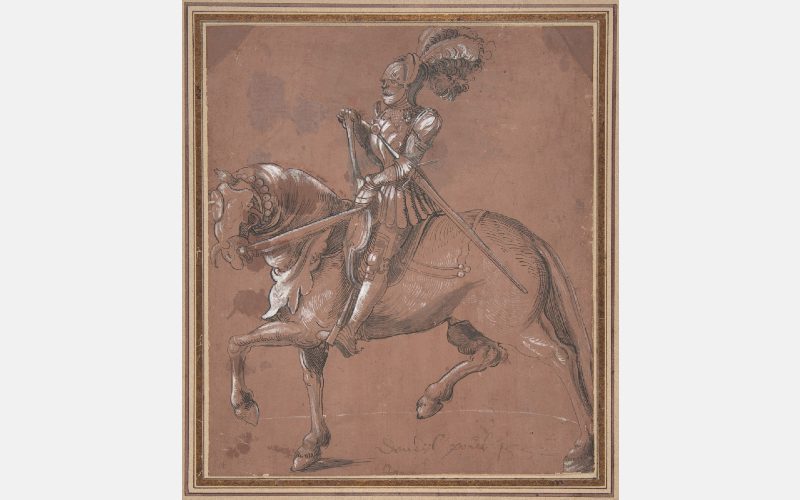
The Normans in England carried their swords on the left side by a cord or belt around the waist, occasionally supported by the hauberk, a tunic of chain mail armor. The longswords of medieval knights also had scabbards attached directly to the skirt of their armor. In some circumstances, warriors carried the
Some swords required the use of a baldric, a belt worn over one shoulder.
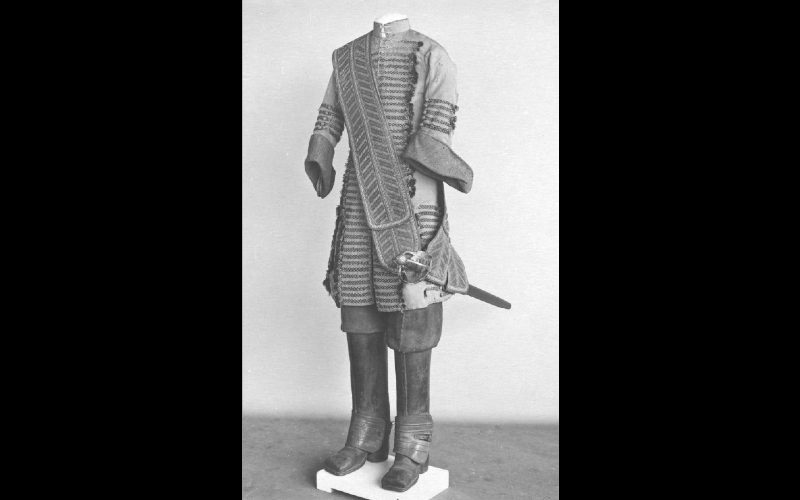
By the end of the 1st century CE, swords like the Roman short
It remains unknown whether the Romans secured the baldric under their waist belt. Some belt fittings included buttons for attaching a scabbard to a belt, but precisely how the
Warriors rarely wore their swords on their backs.
Knight swords like longswords, were worn on the hip. They would be impractical to draw from the back, as reaching behind the head exposed it as an unprotected target. However, great swords like the Scottish Highland claymore are too long to be worn on the belt, so the Scots used a shoulder sheath to carry them on their backs.
Some swords, including their scabbards, had ceremonial and social values.
Frankish law codes suggest that a
Leather sheaths are often unsuitable for modern warfare.
During World War II, the machete served as a close-quarters fighting knife for the British and Americans. Its heavy, single-edged blade was ideal for jungle operations, chopping through the thick foliage. It usually had a leather sheath that often rotted in the humid climate, causing many soldiers to prefer water-repellent canvas material for its covering.
Some military swords required sword frogs for holding the weapon.
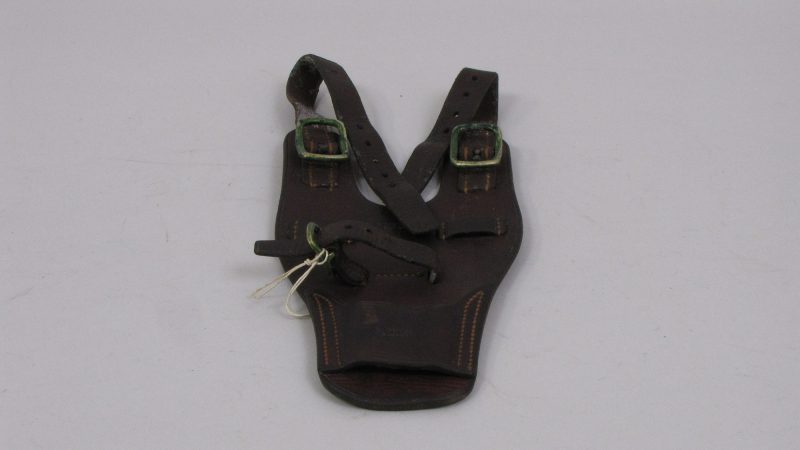
Usually made of leather, a
Japanese samurai swords also have decorative scabbards or saya.
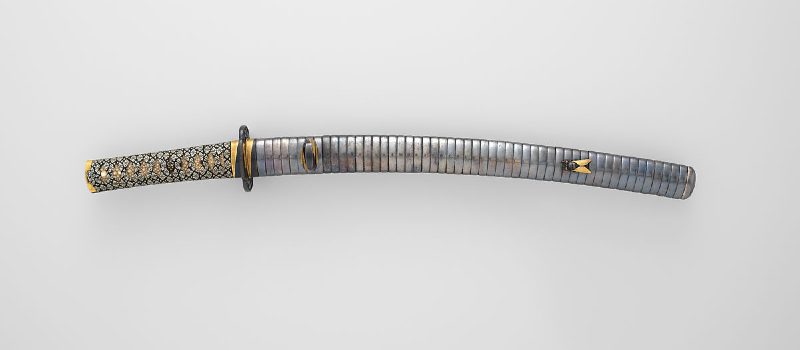
The Japanese katana served as the symbol of the samurai who often used several
Ninja swords had multifunctional scabbards which served as tools and improvised weapons.
Unlike the decorative scabbards of the samurai
Many fantasy and LARP swords have ornate scabbard designs.
Swords are popular weapons in films, anime, and often come in richly decorated scabbards. The Legend of Zelda video game features highly decorative weapons such as the royal broadsword, golden claymore, moonlight scimitar, and others with bejeweled mountings and sheaths. It is no wonder they are also popular in cosplay and live-action role-playing games or LARP.
Conclusion
Different types of swords had varying scabbard constructions and mountings.

